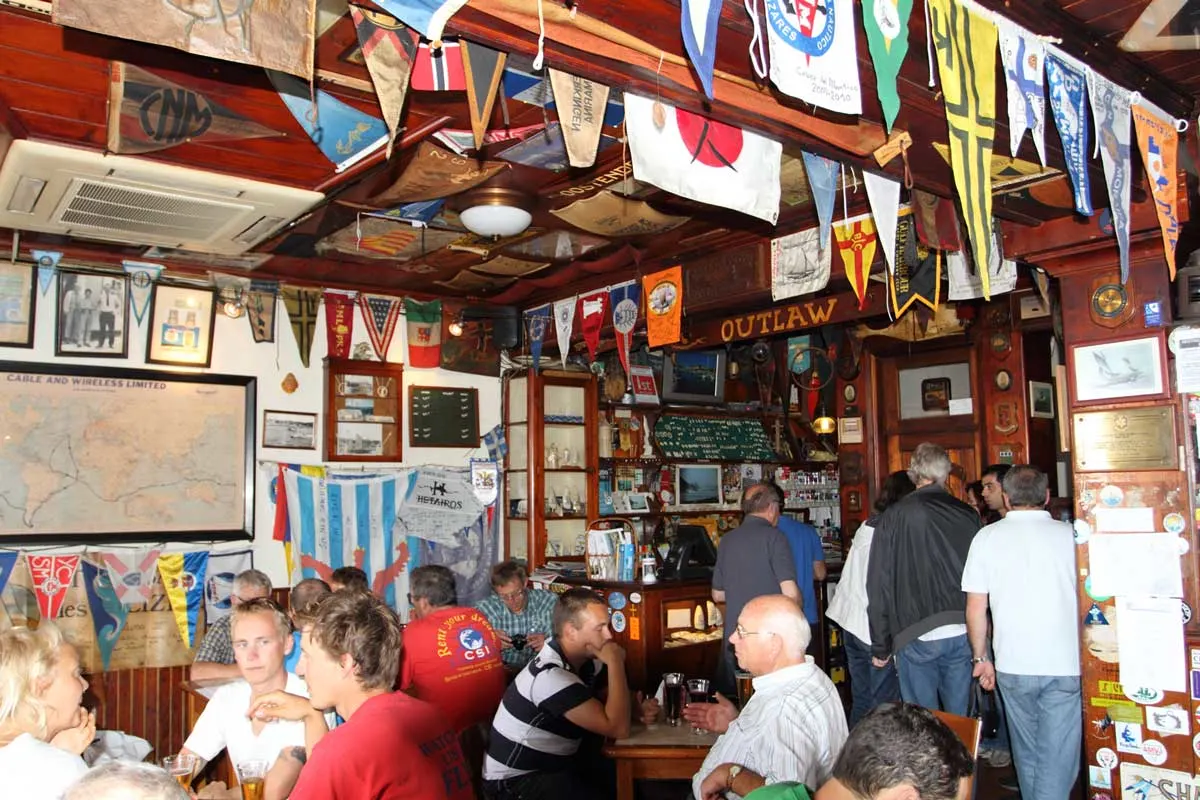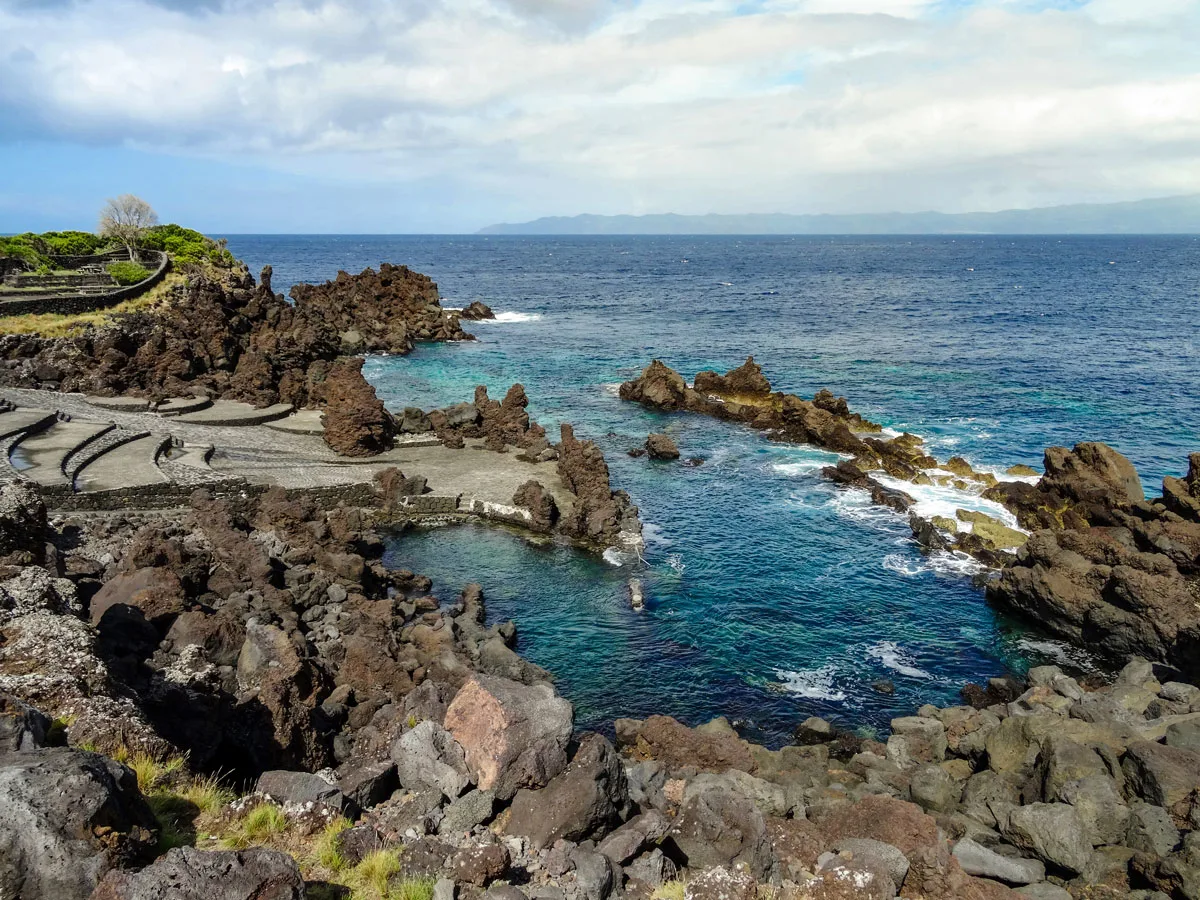Deciding on a new place to travel can be tricky. Sandy beaches and cocktails are great. Bustling cities with first-class restaurants are fun. Or, how about a volcanic island paradise set in the middle of the Atlantic Ocean. The Azores Islands are that paradise.
The Azores (Açores in Portuguese) is a relatively unknown archipelago of nine sub-tropical islands in the North Atlantic Ocean 800 miles west of continental Portugal.
Many don’t realise the Azores are one of two autonomous regions of Portugal, including the island of Madeira. Two of the most incredible places to visit in Portugal.
A unique and enchanting volcanic paradise and a real gem yet to be oversaturated by mainstream tourism.
The islands have a strong European heritage rich in history and culture. Visitors to the Azores will also be captivated by the slower pace of life and the almost overwhelming natural beauty.
An endless vista of rolling green hills set against the deep blue Atlantic Ocean can be seen from virtually any viewpoint.
Best Time to Visit the Azores
The best time to visit the Azores is between May and October when the weather is beautiful and there is less chance of experiencing storms or hurricanes. Bear in mind though July and August are peak seasons, so the islands can get busy.
November to February experiences the highest rainfall. Although, as the Azores have a changeable microclimate, sunny days are not unheard of in winter. Winter is also a great time to make the most of the Azores hot thermal springs.
April to September is whale season, with April and May being the peak whale-watching months.
How to Get to the Azores
There are two ways to get to the Azores. While one is significantly faster than the other, it doesn’t offer anywhere near as much adrenaline-filled adventure.
Sailing to Faial
I recently sailed across the Atlantic Ocean in both directions aboard my sailboat Delos. Sailing 2500 miles from Bermuda or the Caribbean takes approximately 15 to 20 days and is a life-changing experience (you can learn more about it on my YouTube channel).
Yachts leaving the Caribbean in June are always looking for crew, and there are many websites such as findacrew.net where budding novice sailors can hitch a ride across the Atlantic.
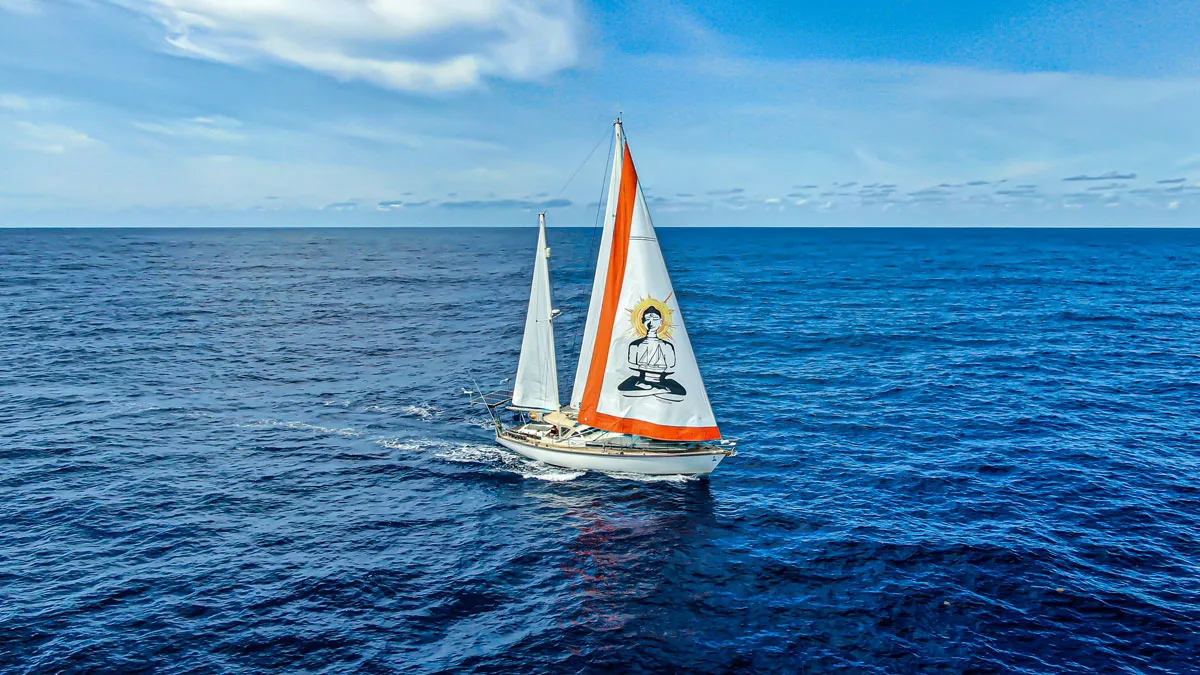
Flights to Faial Island
There are alternatives for those who haven’t got the time or the sea legs to travel the old-fashioned way. Direct flights from Lisbon and Porto will have you in the Azores in around 2.5 hours. You can also fly from Boston to the Azores in under 5 hours.
Arriving in the Azores is a wondrous experience. The first thing to catch your eye is the strikingly green islands with the contrasting black volcanic coastline of the archipelago.
Traditional red terracotta roofs and cobblestone streets accentuate the European heritage adding to the charm and atmosphere of the islands.
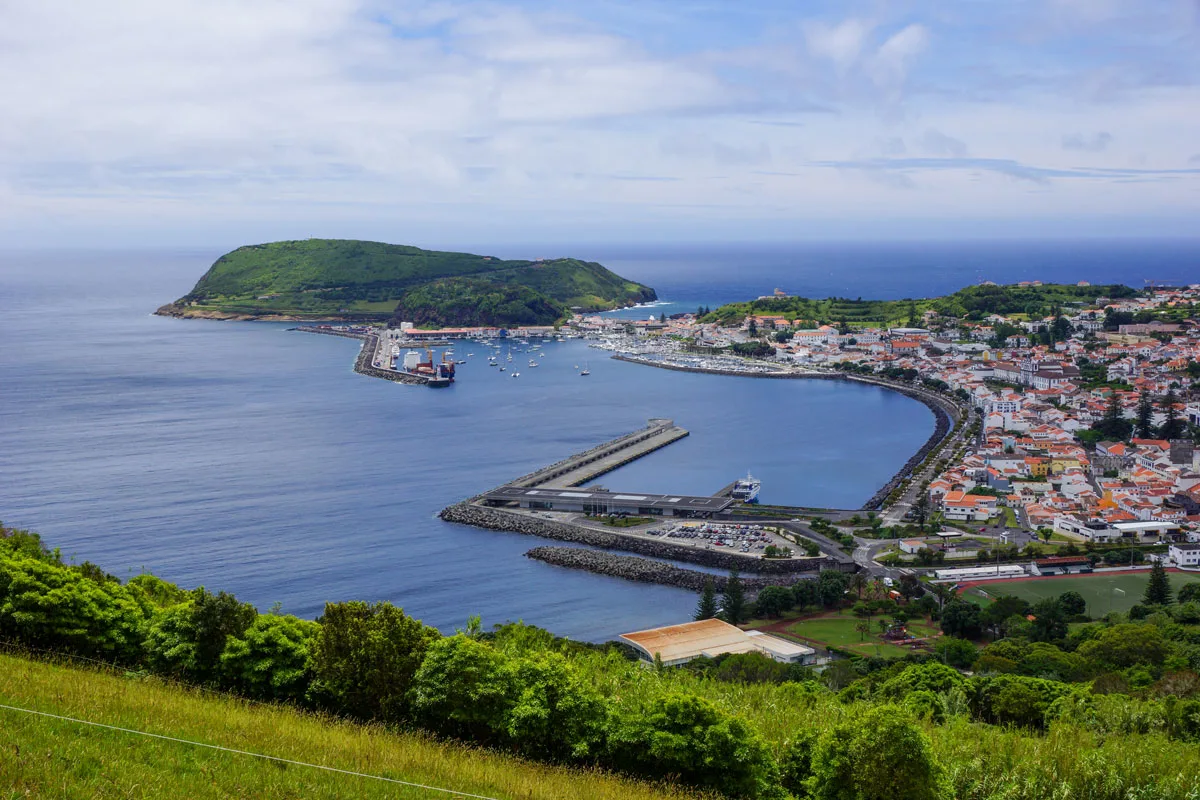
How to Get Around Faial Island
Hiring a car or a scooter is the perfect way to see the island. The country roads are in excellent condition and offer great views.
Be aware; the weather can change quickly in the Azores, and mist can roll in, making roads wet and slippery, especially as you head up the volcanos.
Car Rental in the Azores
Car rental on Faial Island and the Azores as a whole is very affordable. A compact, mid-size four-door vehicle is perfectly suitable for exploring Faial.
Discover Cars are an excellent site to compare the best deals from local rental companies with no hidden fees and free cancellation. Search Car rental Deals for Faial here.
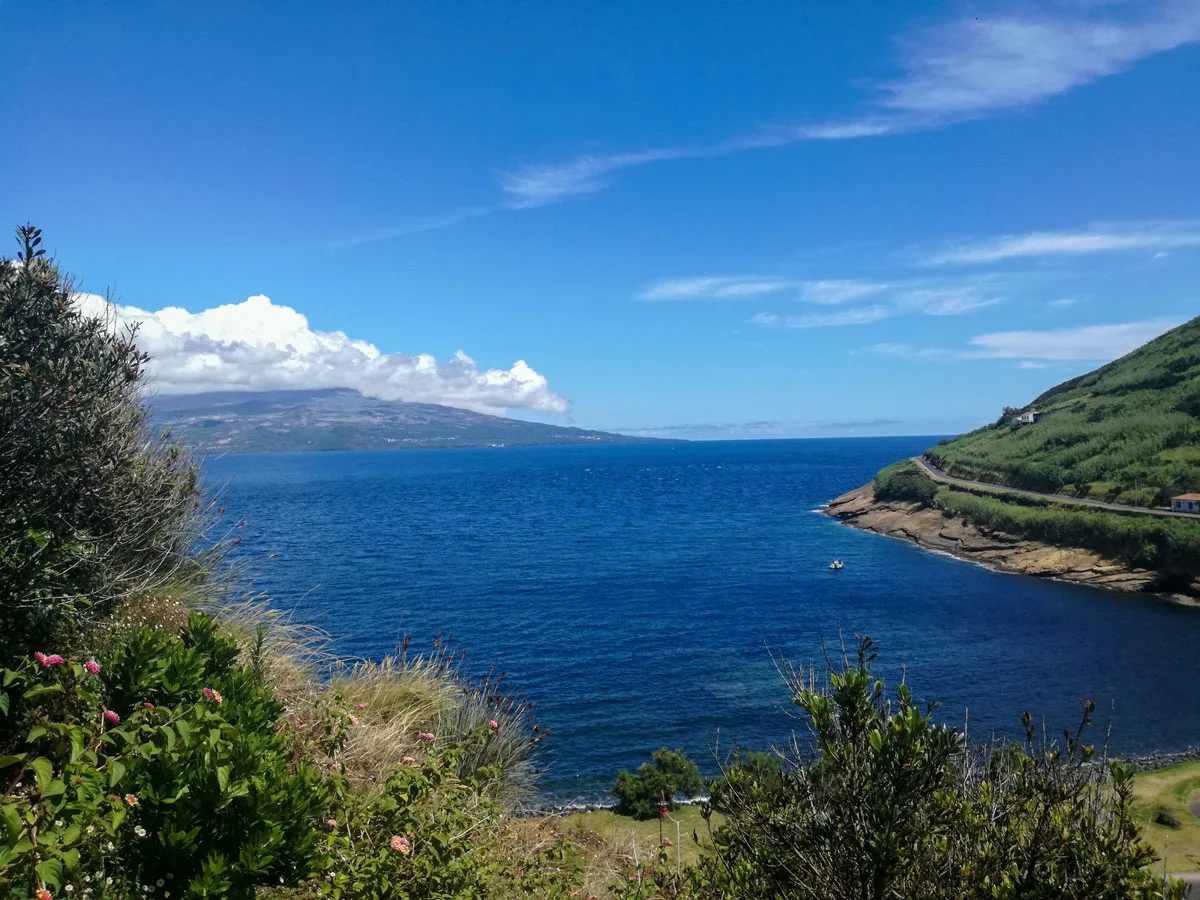
Best Things to do on Faial Island Azores
With so much to experience in the Azores, it can be a bit overwhelming planning your perfect Azores adventure. I have narrowed it down with the best things to do during a week on Faial Island.
Faial is in the central group of the Azores archipelago. One of the “triangle of Islands” along with São Jorge and the Island of Pico. Some say Faial is the prettiest of the Azores islands. Considering the overwhelming natural beauty of the Azores, it’s a pretty big call to make.
One thing is for sure: Faial never fails to impress visitors to the Azores.
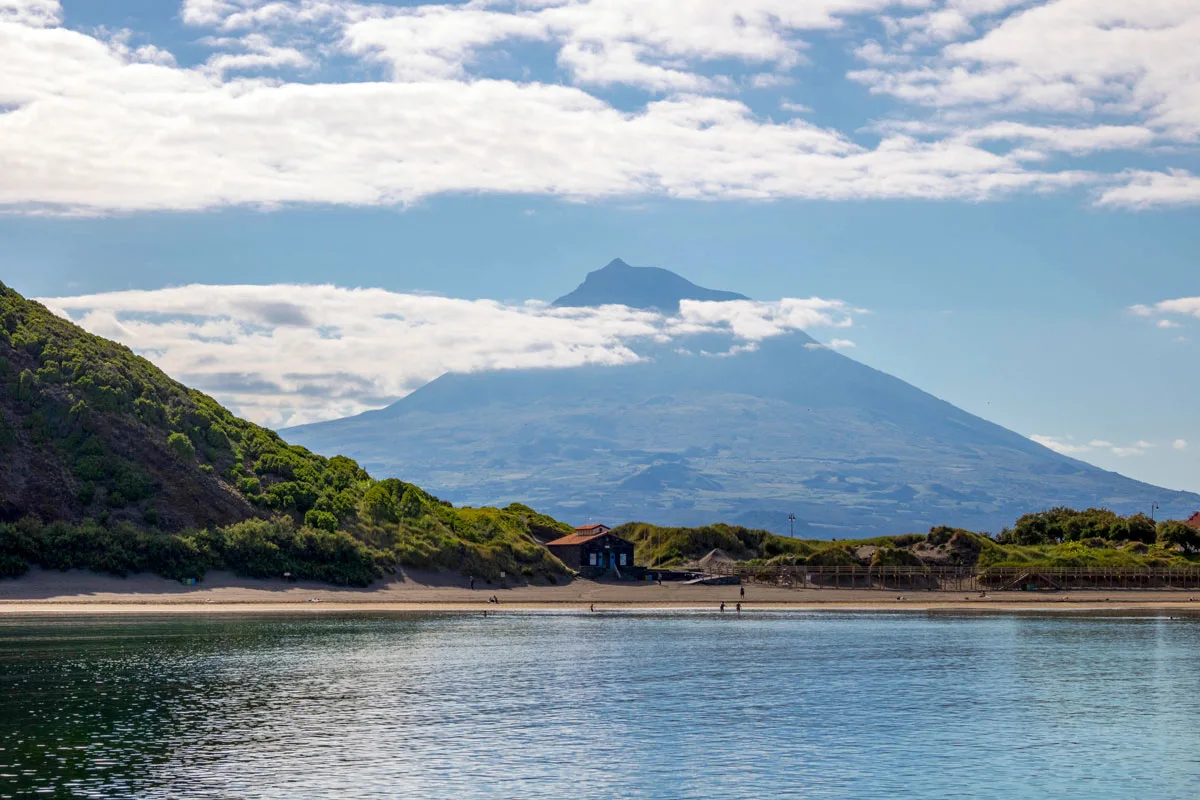
Explore Horta
Horta is the main town of the island and where you will get a feel for the rich maritime history of the Azores.
The Horta Marina is the stuff of legend among sailors, who have sought shelter in her calm, protected waters for centuries. Walking the docks, you won’t come across any flashy charter boats, just rough and ready ocean-going vessels, salty from the thousands of miles put under their keels.
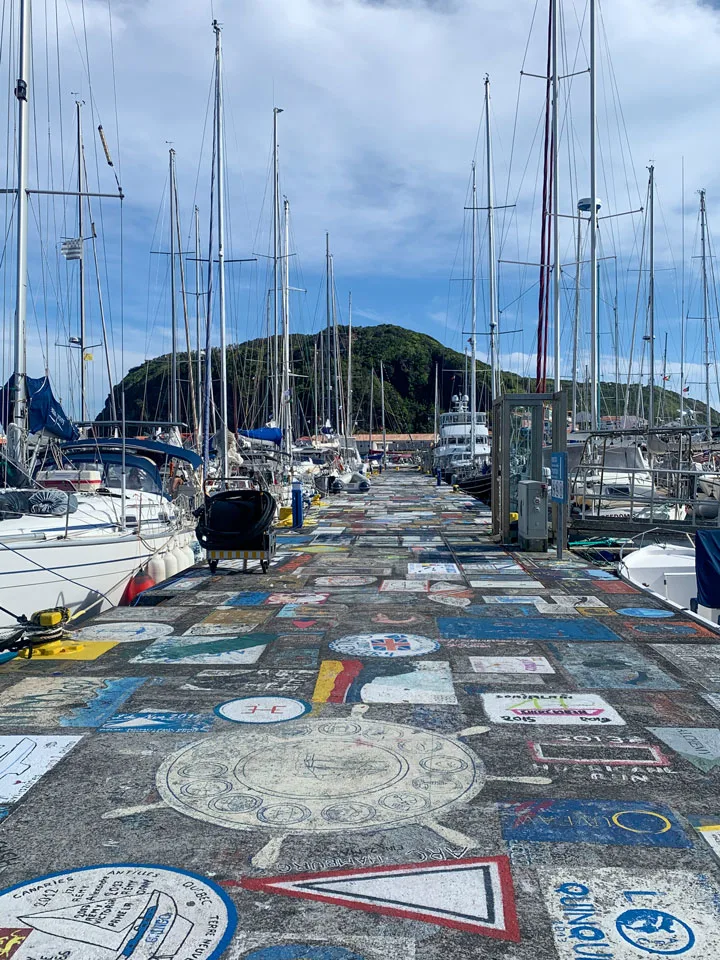
For sailors making the long trip from the Caribbean, a right of passage is to paint a mural on the marina walls. There is an endless display of colourful paintings, calling cards from the boats that have stopped on their Atlantic crossing.
Make time to stop and speak to the yachties who call this marina home. You’ll be treated to colourful tales from the sea and discover a very different way of life to one anchored on land.
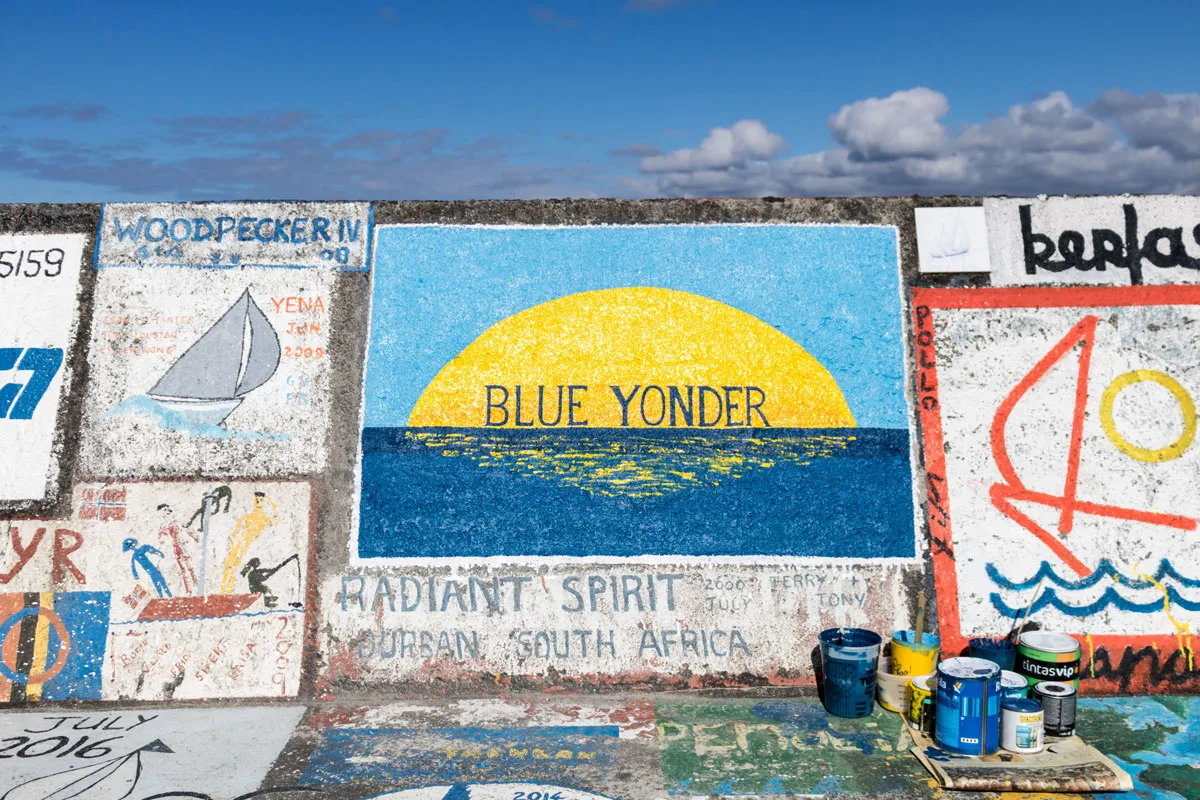
Peter’s Café Sport Bar
For those who have arrived by sea or fancy a bar steeped in the Portuguese tradition, a stop at Peter’s Café Sport is necessary.
The nautically themed bar run by generations of the same Portuguese family is a historical and cultural landmark of the Azores. It has been said, “If you sail to Horta and don’t visit ‘Peter Café Sport’, you haven’t seen Horta in reality “.
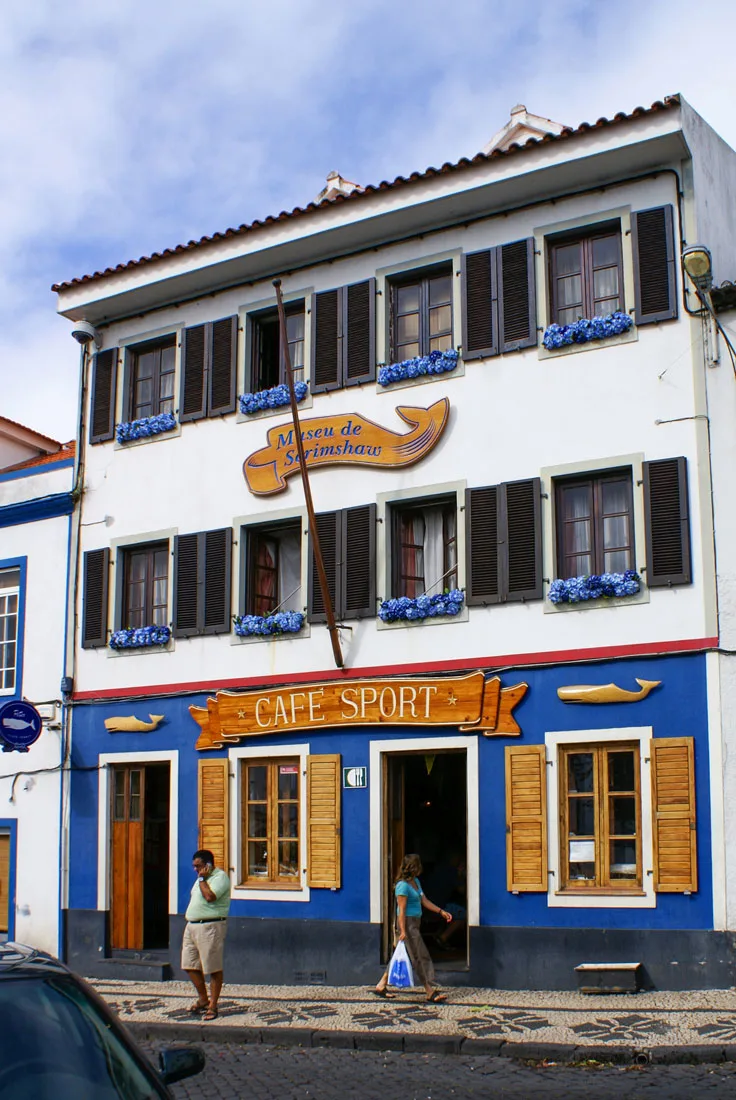
Owner José de Azevedo “Peter” became known for assisting and welcoming yachtsmen arriving in Horta Bay after their Atlantic crossing. In 1981, he was appointed an honorary member of the Ocean Cruising Club in recognition of the many services provided to yachtsmen.
Stepping into the bar, the town’s colourful history becomes obvious. The paraphernalia on the walls, the boisterous laughter, the photos of old mariners and the hauntingly beautiful scrimshaw collection set the scene.
Scrimshaw, intricately carved ivory whales teeth, are indeed works of art. An art form largely synonymous with the whaling heritage of the Azores.
Hauntingly beautiful pictures of tall ships, sunsets, wives and newborn babies so delicately and painstakingly inscribed. Historically, scrimshaw was bought and sold as a way for the island’s whalers to make money.
Although the whaling industry is long gone, its impact on Faial is long-lasting. The scrimshaw museum found above Peter’s Café Sport gives a real insight into how these starving farmers could make a living.
It’s hard to decide what’s more enjoyable, drinking gin with the Portuguese locals, swapping stories with other yachties or marvelling at the bar’s paraphernalia.
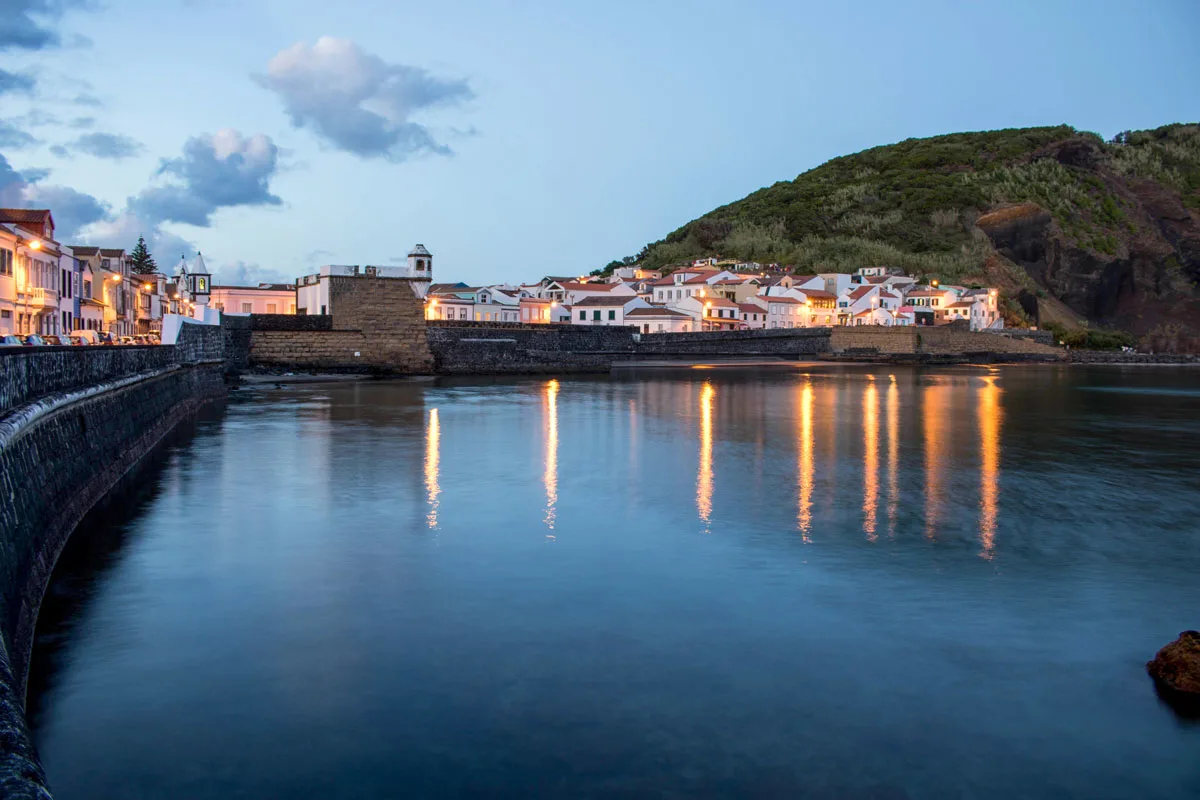
Capelinhos
Faial is a volcanic island. As recently as the 1950s, eruptions on the western peninsula formed over 2two square kilometres of new land.
These eruptions caused massive environmental damage and forced locals to emigrate, fleeing to America after losing their homes and livelihood.
Seventy years later, the island has recovered, and the incredible natural wonder of volcanic lava flow can be seen at Capelinhos. The baron slopes are a great reminder of the power of mother nature and the role of the volcanoes in creating the beauty of the Azores.
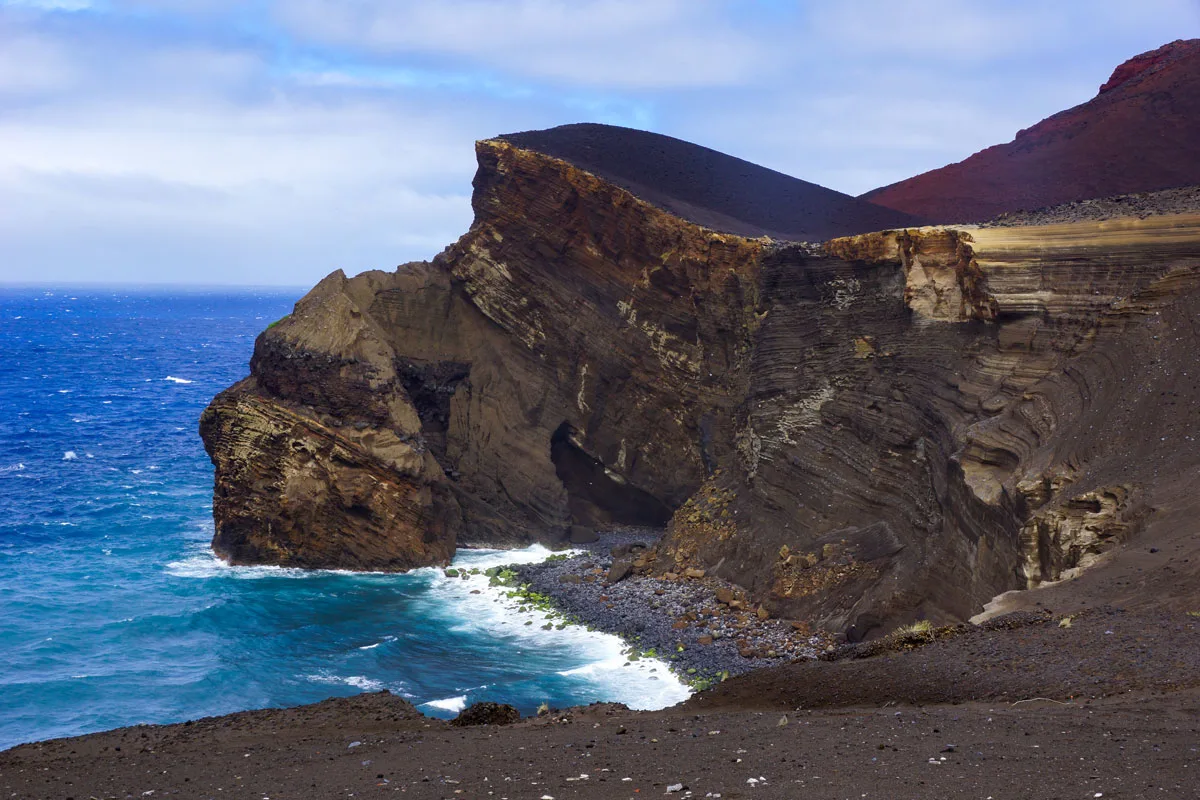
The Capelinhos Interpretation Centre, a building constructed entirely underground, shows exhibits explaining the formation of the area and volcanoes around the world. It’s a humbling experience to see volcanoes’ destructive and creative power in the exhibits in the world-class underground centre.
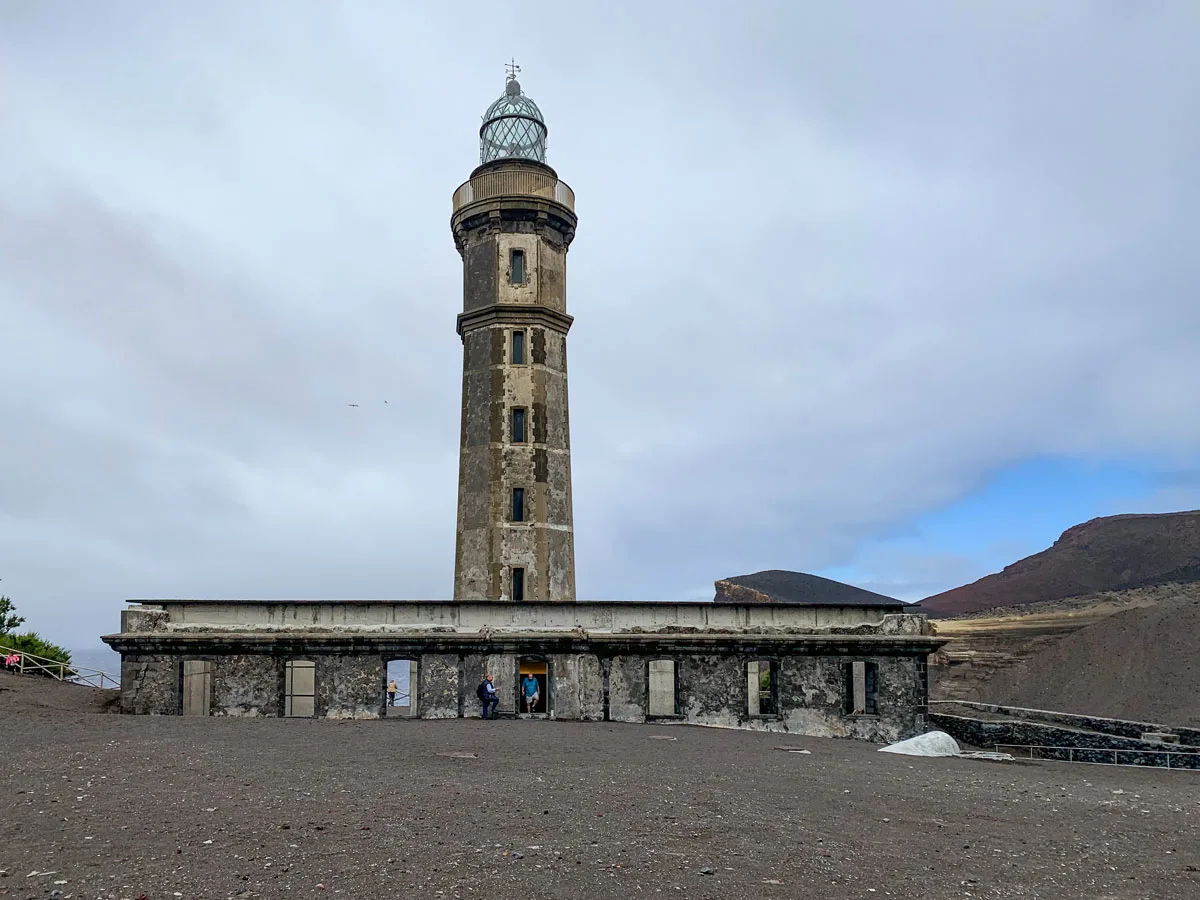
Natural Swimming Pools
When the sub-tropical sun is out and the breeze is warm, the locals head to the natural swimming pools formed in the jagged volcanic rock.
Castelo Branco, Porto do Comprido, or Varadouro are great places to sink into the fresh, clear Atlantic water. The pools are also a photographer’s dream—the contrast of water, rocks, cliffs and greenery providing fantastic landscape photography opportunities.
Slipping into the fresh Atlantic water of the pools as the swell slowly rises and falls, enjoying the views of the coastline is truly a magical experience. However, even in paradise, you need to be aware of certain dangers.
The phenomenally purple Portuguese Man-O-War jellyfish that inhabit the area are one such danger. The fascinating creatures float in the water, their little sail in the air, hoping the trade winds will blow them towards their next meal. Or an unsuspecting swimmers leg delivering a nasty sting.
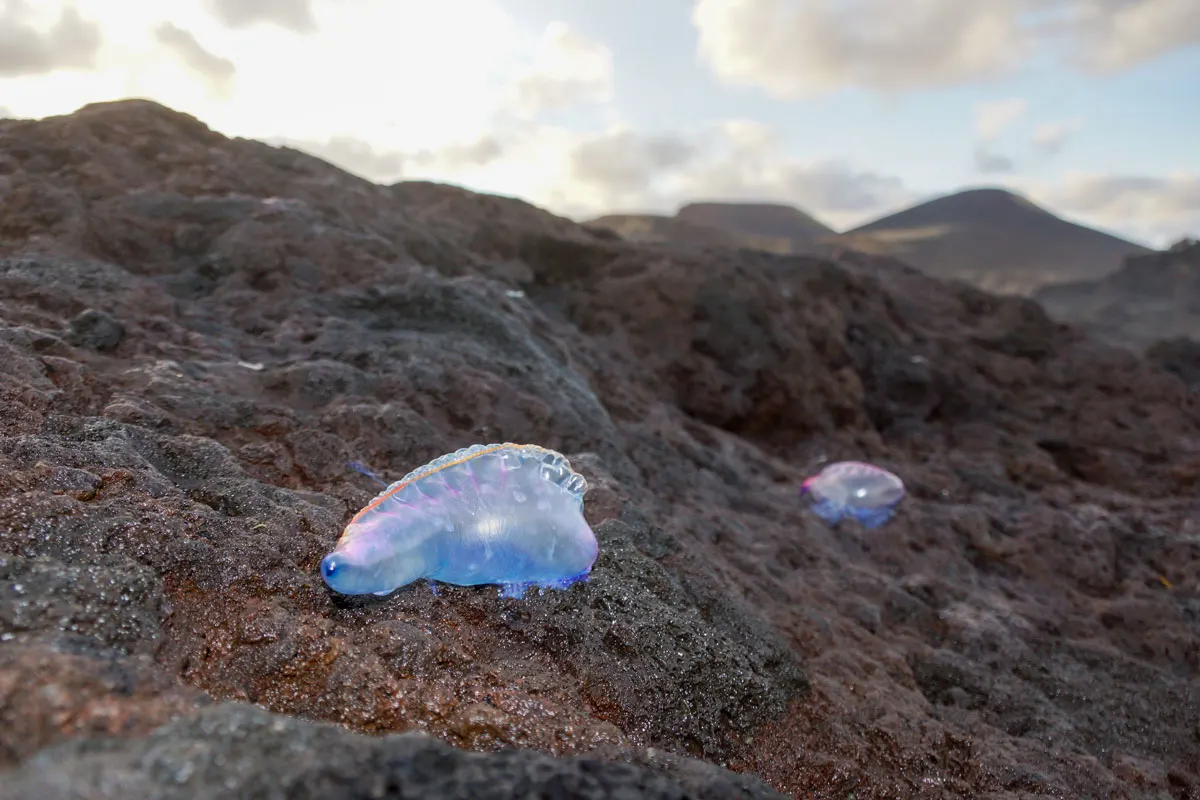
The Caldeira
The Caldeira is perhaps one of the most well-known attractions in Faial. Located in the middle of the island, it is a two-kilometre wide, 400-meter deep volcanic cone.
The nature reserve showcases the rare flora species found in the Azores. With stunning views of both the crater and the towering Pico island to the east, it is one of the best vantage spots in the Azores.
High atop the Caldeira’s rim, the clouds and the mist flow in as the cold, moist air rushes up the steep slopes of the Caldeira. It is possible for those who like to get down and dirty to take a trek into the crater. However, to protect the natural plant species, the local tourism authority only allows a limited amount of hikers per day.
There is also a slightly more forgiving goat trail along the crater’s rim, where every vantage point of the incredible natural showpiece can be experienced.
Whale Watching and Shark Diving
The Azores is famed as Europe’s premier whale watching destination. With pristine waters that descend to the black depths of the deep, it’s possible to see humpback, sperm and blue whales as well as different species of dolphins.
There are many whale watching tours to choose from, all with excellent reputations.
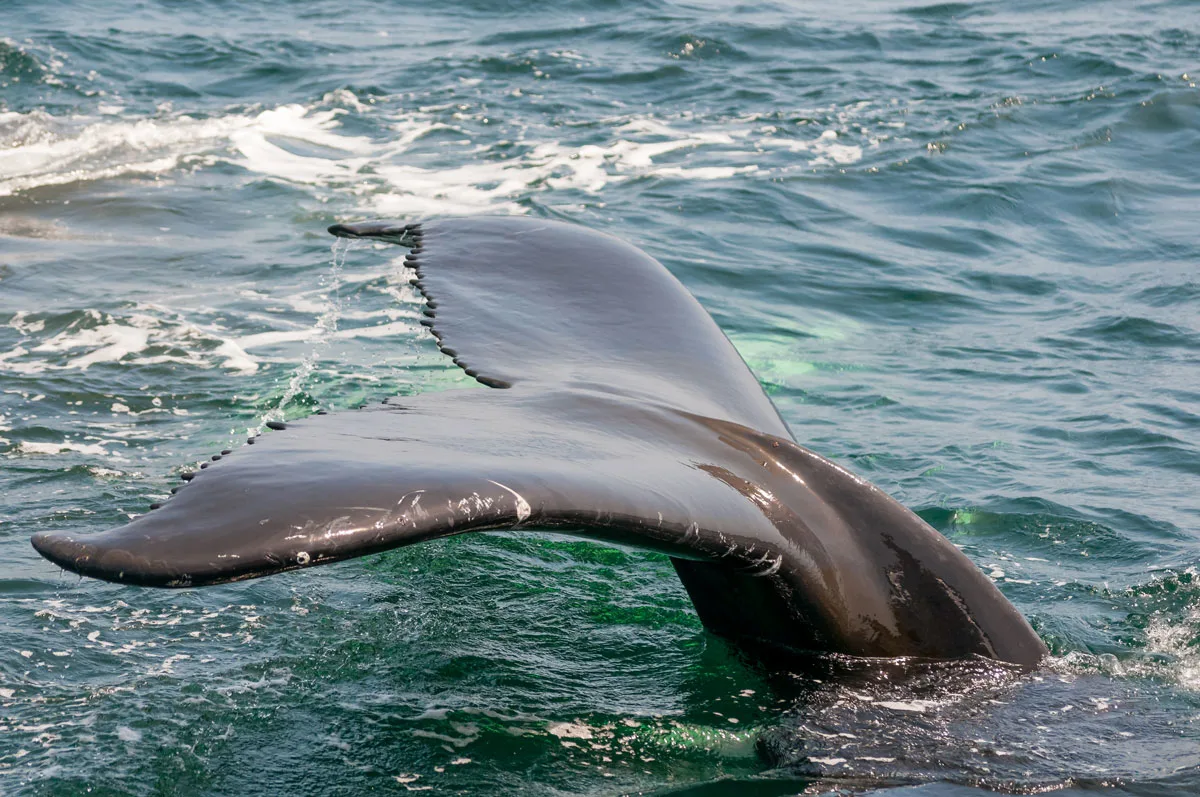
For something a little different, take the opportunity to get up close and personal with blue sharks. Hit up one of the local dive shops for a once in a lifetime opportunity to dive with these amazing creatures in the clear Azorean waters.
Local divers know the best locations for mako and blue shark sightings at any given time of the year. Watching these noble creatures glide through the water is a massive rush you won’t soon forget.
Visit Pico for Some Volcano Hiking
A visit to Faial is not complete without a visit to the neighbouring island of Pico. Only a short ferry ride across the channel, there are up to 46 services per week.
Rising almost 8000 feet out of the water, Pico is the highest point in Portugal and not easily missed.
For those who enjoy a hike, take the challenge and attempt the five to seven-hour ascent to the top of Pico’s volcanic crater for arguably the most incredible views of the Azores.

To do the hike to the top, you must first register with the authorities at the base of the mountain. They will fit you with GPS trackers before you head off. The slopes are free to explore. If you bring a tent, it is possible to spend the night in the crater at the top.
On a clear day, the summit is the perfect spot to get some fantastic photos of the Azores. It’s an especially great opportunity if you are into timelapse photography. Sunset and sunrise are also well worth the effort.
About the Author
Brady Trautman
Originally from Florida, Brady studied environmental engineering before transitioning to full-time sailing and vlogging and capturing the adventures as his crew sail around the world. SV Delos have been lucky enough to create a YouTube channel that helps to keep them on the water—allowing them to see some of the most remote places on earth and share the beauty they witness with others.
Brady’s skills in marketing, video editing and qualifications as a Divemaster, Dive Instructor and Rescue Diver have played a considerable part in keeping Delos in the top echelon of YouTube sailing channels over the past decade all the while inspiring others to follow their dreams. With an easy-going vibe, infectious smile and quick wit, Brady brings laughter and love to all those around him. Follow SV Delos on YouTube, Facebook and Instagram.


